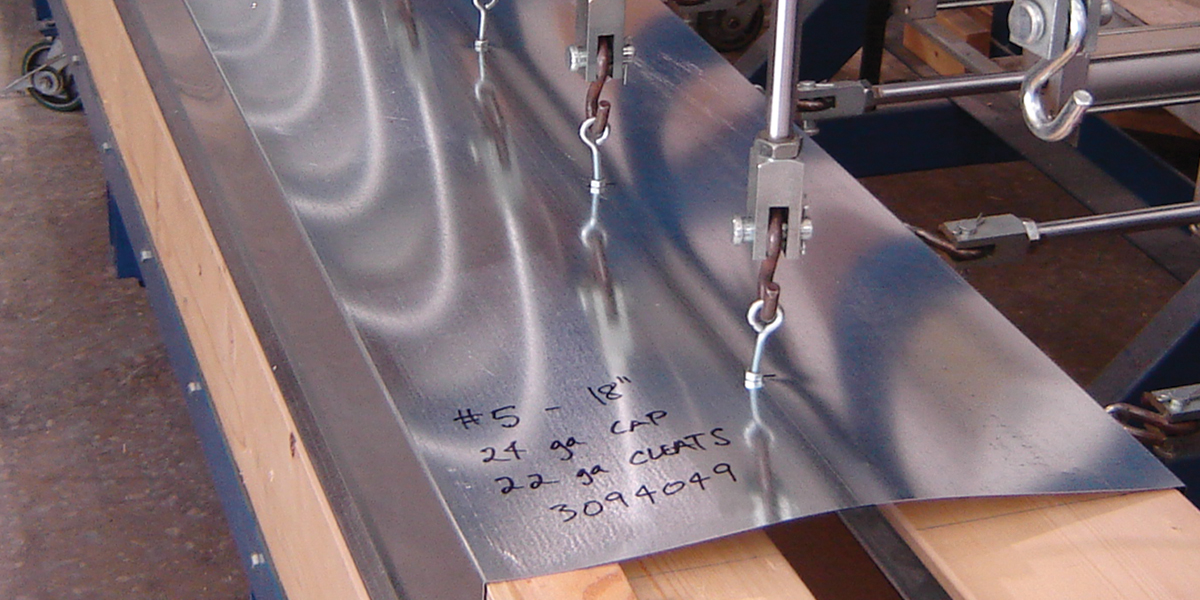NRCA maintains separate certifications with UL Solutions and Intertek Testing Services NA Inc. (code-approved testing and certification agencies) based on two standards:
- ANSI/SPRI/FM 4435/ES-1, “Test Standard for Edge Systems Used With Low Slope Roofing Systems”
- ANSI/SPRI GT-1, “Test Standard for External Gutter Systems”
ES-1 applies to perimeter edge-metal flashing systems, such as embedded edge metal, metal fascia and metal copings; it specifically does not apply to gutters. GT-1 specifically applies to external metal gutters.
ES-1 and GT-1 are referenced in the International Building Code,® 2024 Edition, as test requirements for edge-metal flashing systems and gutters, respectively. The specific IBC requirement is as follows:
“1504.6 Edge systems for low-slope roofs. Metal edge systems, except gutters and counterflashing, installed on built-up, modified bitumen and single-ply roof systems on a low-slope roof shall be designed and installed for wind loads in accordance with Chapter 16 and tested for resistance in accordance with Test Methods RE-1, RE-2 and RE-3 of ANSI/SPRI ES-1, except basic wind speed, V, shall be determined from Figures 1609.3(1) through 1609.3(4) as applicable.
1504.6.1 Gutter securement for low-slope roofs. Gutters that are used to secure the perimeter edge of the roof membrane on low-slope built-up, modified bitumen, and single-ply roofs, shall be designed, constructed and installed to resist wind loads in accordance with Section 1609 and shall be tested in accordance with Test Methods G-1 and G-2 of SPRI GT-1.”
Also, ES-1 and GT-1 are sometimes referenced in project specifications as a requirement for edge-metal flashings and gutters.
NRCA has conducted the necessary testing based on ES-1 and GT-1 and maintains its UL and Intertek certification programs to provide highly credible means for shop-fabricated edge-metal flashings and gutters to comply with the IBC and specific project requirements.
Companies with metal fabrication capability interested in becoming an authorized fabricator in NRCA’s shop-fabricated edge-metal certification program can contact Andrea Khalil, NRCA’s manager of technical services, at (847) 493-7510, or email akhalil@nrca.net.


